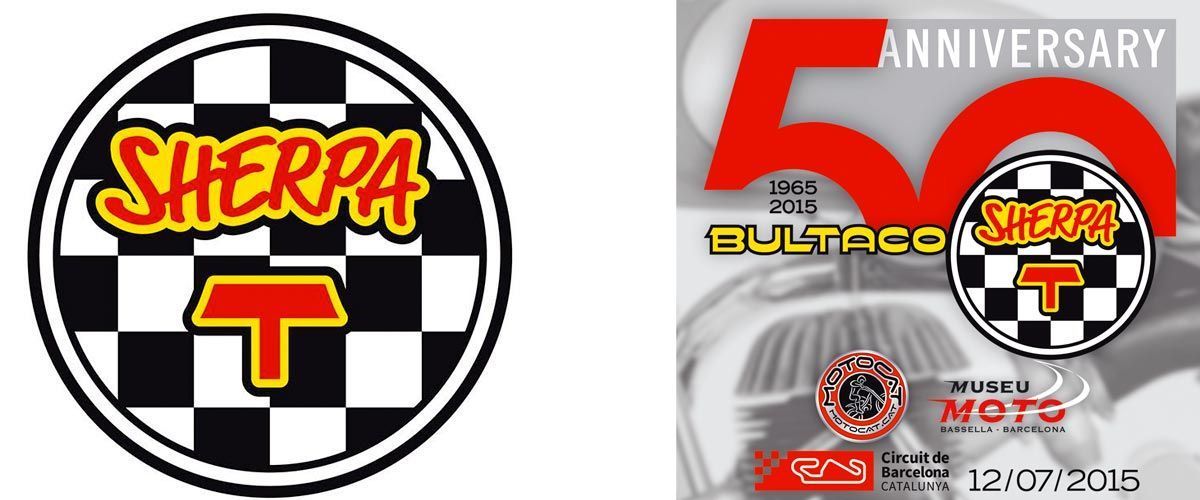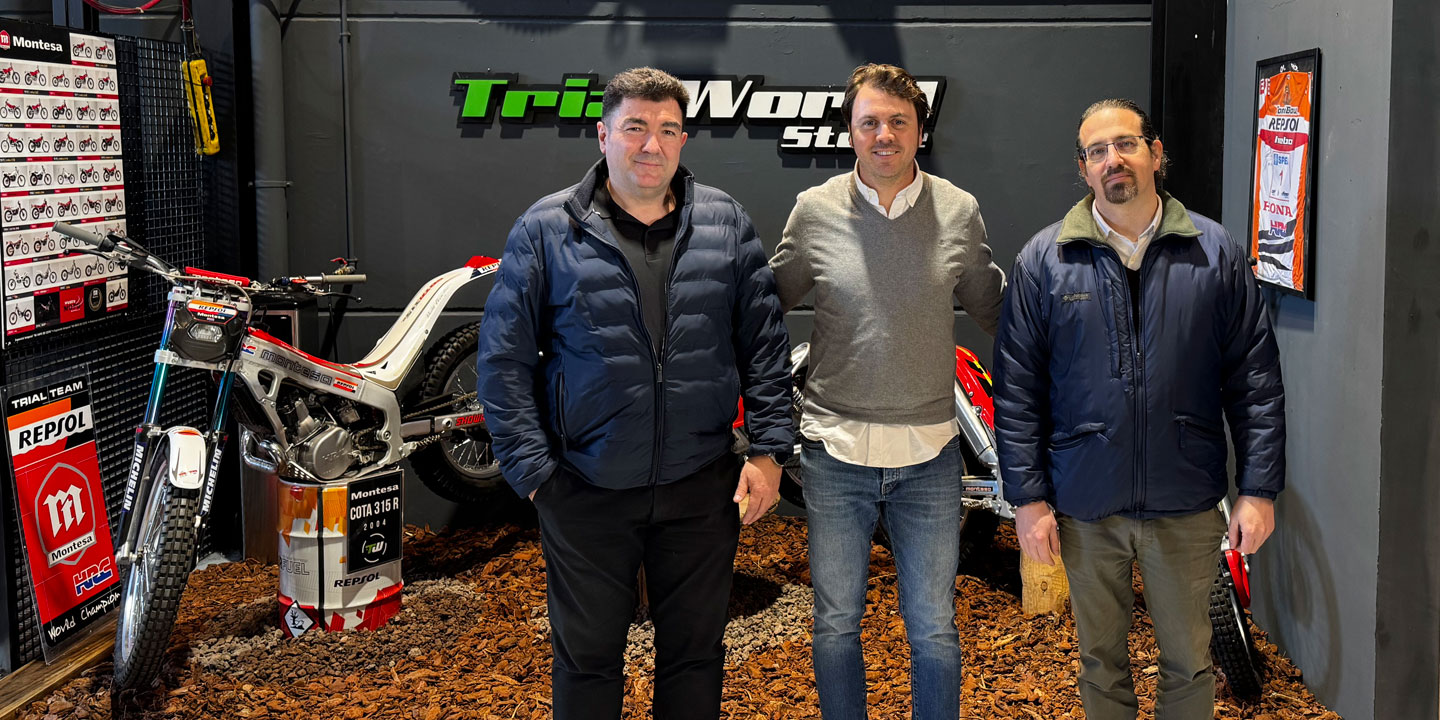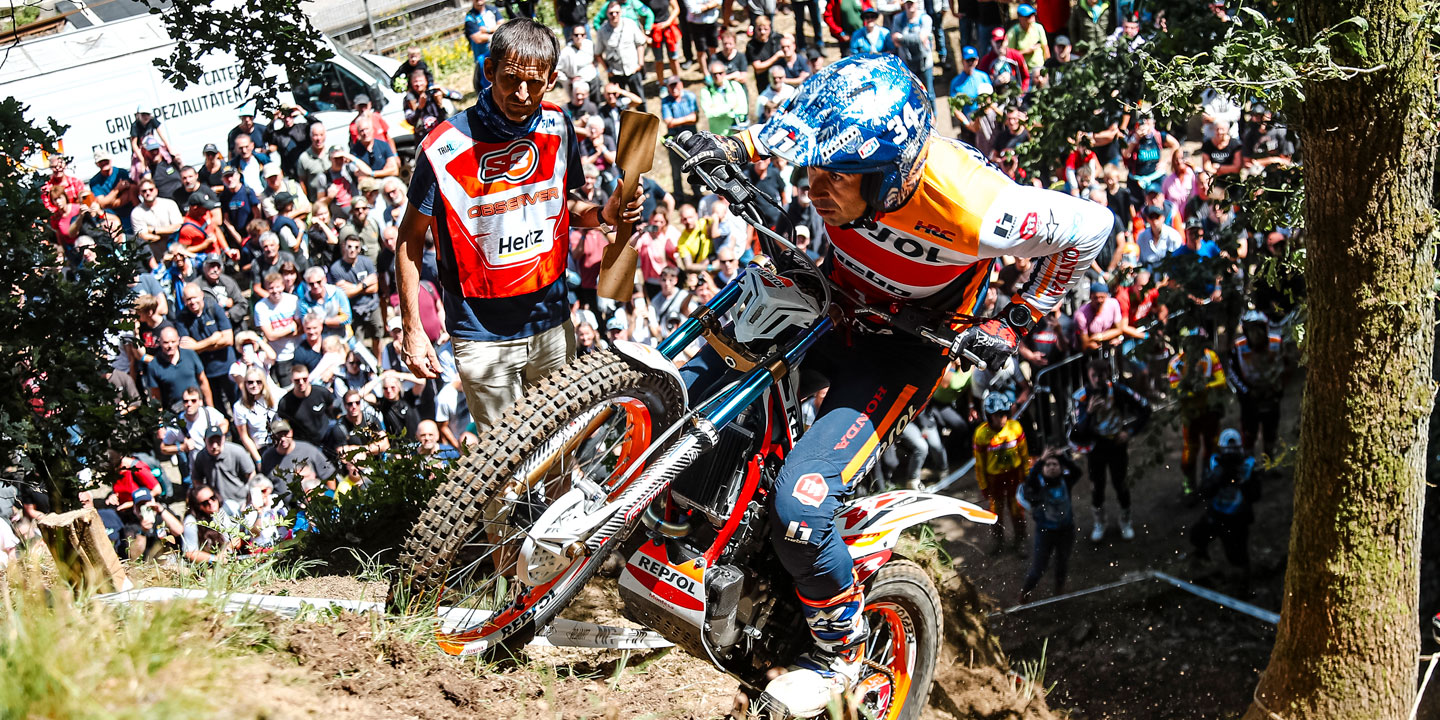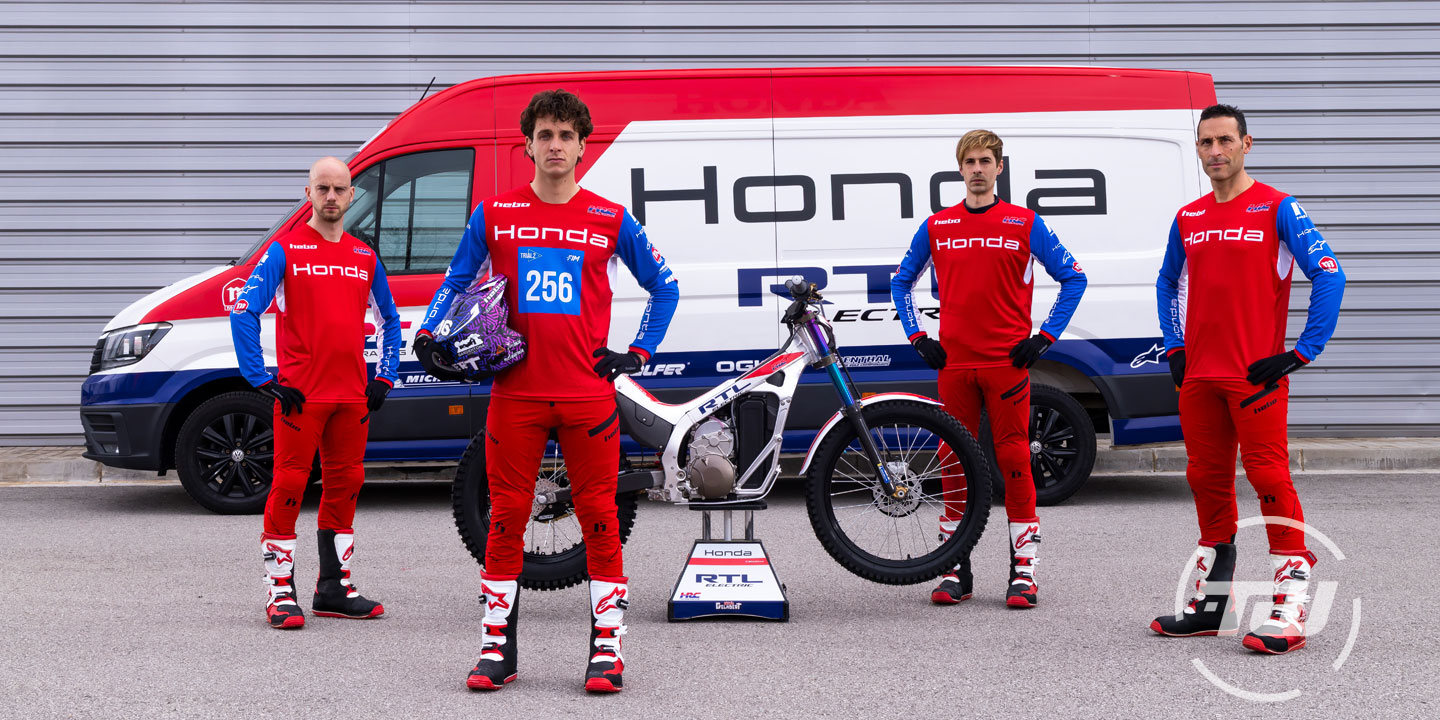Very good areas!
Trial bikes will once again hit the asphalt of the Circuit de Barcelona-Catalunya, but this time, exclusively for the Bultaco brand and more specifically for the Sherpa T models.
2015 marks the 50th anniversary of the creation of one of Bultaco’s most legendary models, the Sherpa T. The queen of trial, a bike that marked a before and after in the history of the discipline and that remained in production, in its multiple versions, for almost 20 years.
It is for this reason that, from the MOTORCYCLE MUSEUM of Barcelona and MOTOCAT, we want to pay a special tribute to him. It will take place on 11 and 12 July, coinciding with the celebration of the 24 Hours of motorcycling at the Circuit de Barcelona-Catalunya. A weekend dedicated to all the “bultaquistas”, which will start on Saturday with a welcome dinner and will end on Sunday with a magnificent party at the circuit: great exhibition of Sherpa T models, classic trial exhibition, reunion of riders and members of the Bultaco factory…
We hope that outstanding pilots of the brand and protagonists of the history of the Sherpa T will attend: Sammy Miller, Martin Lampkin, Malcolm Rathmell, Bernie Schreiber, Yrjö Vesterinen, etc. and also all the outstanding pilots of our country: Ignacio Bultó, Manuel Soler, Toni Gorgot, etc.
A must for all lovers of the Classic Trial and especially the Bultaquistas
But this is not what I want to comment on in this new post, I am going to do it solely and exclusively about the queen of trial, “the Sherpa”.
In 1960 Bultaco launched a motorcycle derived from the Tralla 101 road bike (the first model of the brand to appear in 1959): The Sherpa N, a motorcycle designed for rural use in areas with bad roads. This bike can be considered the first Bultaco trial.
Shortly after, Francisco Javier Bultó, founder and owner of Bultaco, began to organize the “Trial de San Antonio” on his family farm in San Antonio en Cunit. It was mostly a party for the people of Bultaco. You could participate with all kinds of adapted motorcycles: Tralla, Sherpa N, etc. Later, Bultó organized excursions with its pilots, to experiment for this test, starting from a “prototype” that they would adapt in the field. This bike would be the origin of what years later became the Sherpa T.
In 1962, Bultó’s nephews: Juan Soler Bultó and Oriol Puig Bultó, participated in a trial organized by the FIM in Paris with the intention of promoting this sport on the continent (since at that time it was practiced little more than in the British Isles), in order to investigate in the field that unknown discipline and improve the prototypes of the brand. Already in 1963, Oriol Puig Bultó participated in the Scottish (6 Days of Scottish Trial) to test the new, more evolved prototypes. He dropped out, but the king of trial at the time, Sammy Miller, took an interest in those two-stroke bikes, surprised by both their lightness and the liveliness of the engine.
Although some trials had already been organized in Catalonia (apart from those in San Antonio), 1964 can be considered as the year of the beginning of this modality in our country, especially after the celebration in Barcelona of the “I Trial del Tibidabo” on November 1 of that same year. Shortly before this happened, that summer, Sherpa T had been brewing on the Bultó estate.
Be that as it may, the fact is that Sammy Miller was in Cunit, at the San Antonio farm, in the summer of 1964, testing the prototype that Don Paco Bultó had prepared for him, suggesting some changes.
At the end of these sessions, Sammy Miller said that he was comfortable on that very light bike, signed a contract with Bultaco and promised to collaborate in the design of a trial bike that would surpass the heavy English four-strokes.
The Sherpa T, the name given to the new Bultaco model, was officially presented at the 1964 Earls Court exhibition in London. That Christmas, Sammy Miller premiered it in competition. The final version was published for the first time in an essay in the magazine Motor Cycling, on January 16, 1965, and its official presentation was at the Motor Show (in those years it was a combination of cars and motorcycles) of the Barcelona Fair that same year.
From 1966 the expansion of the Sherpa T was unstoppable, reaching more than 500 victories and 30 state championships in several countries, which skyrocketed demand, reaching 20,042 units worldwide in that same year (this sales figure was not surpassed until 1973, with 23,149 units sold). In fact, by the end of the 1960s, trial Sherpa accounted for more than 90% of Bultaco’s production.
The birth of this bike marks a before and after. With the Sherpa T came the great revolution and the international expansion of trial, since for the first time light, fun and efficient motorcycles were available.
Over the years, the Sherpa T underwent profound transformations to maintain its technological leadership. In 1965 the first version, the Model 10, was marketed.
Another milestone in the evolution of this bike was in 1972, when the Sherpa T 350 was born, the first two-stroke trial bike that exceeded 300 cubic centimeters.
Bultaco did not forget the youngest and for them it manufactured the Tirón, Chispa and the Sherpa T of 74 and 125 cubic centimeters.
BULTACO SHERPA T MODELS MANUFACTURED FROM 1965 TO 1981
Bultaco Model 10: (1965 – 1967)
Also known as the “Sammy Miller”. The engine of the first Sherpa T was derived from that of the Sherpa S four-speed motocross with a radial cylinder head. The same year of its launch, 1965, it became the first non-British bike to win the prestigious Scottish Six Days of Trial.
Bultaco Model 27: (1967 – 1968)
This model was also known as the “San Antonio” Sherpa, because it was developed on the famous estate of the Bultó family. Its main contribution was the new, more modern engine with a five-speed gearbox. The characteristic radial cylinder head was also removed and suspension, electrical system and aesthetics were improved with a new tank and saddle.
Bultaco Model 49: (1968 – 1971)
The third version of the Sherpa T represented an important milestone in the evolution of the bike, as it was improved in all aspects, aesthetics included. With this model Sammy Miller won the first edition of the European Championship. The bike had a magnificent 250 cc engine.
Bultaco Model 80: (1971 – 1972)
Or “Champion Kit.” The 49 model began to offer the famous “Champion Kit” as an extra from 1969, an option that was already incorporated as standard from 1971 on the new 80 model. The popular kit, originally called the “Professional Champion Kit”, consisted of a one-piece set – tank-saddle-side plates – plus a special exhaust and other accessories.
Bultaco Model 91 and 92: (1972 – 1974)
Apart from keeping the 250 version (model 91), Bultaco presented the Sherpa T 350 (model 92), the first two-stroke trial bike with more than 300 cc. The 1972 version was also known as Sherpa “Ignacio Bultó”, since Don Paco’s eldest son was a test rider and his bikes always tested technical details that were later applied in the series.
Bultaco Tirón: (1972 – 1974)
The Bultaco Tirón was a motorcycle designed for the youngest, although designed in the image and likeness of the Sherpa T for adults. It was weighed down by excess weight (large crankcases), excessive engine for a child, a rear tire without knobs and controls that the little ones could not operate.
Bultaco Model 124 & 125: (1974)
At the end of the season and in order to make the sporting successes profitable with sales, these Sherpa models are put into production with some substantial changes, some of them to reduce weight: chrome-molybdenum chassis, dural hubs and crown, new wheels, etc.
Bultaco Chispa: (1974 – 1982)
Fixed bugs with the Pull creating the Spark. The Chispa was a children’s mini trial motorcycle manufactured by Bultaco from 1974 to 1982. Its commercial success meant that throughout this period it did not undergo any substantial change and remained with its general characteristics unchanged. Intended for children between 6 and 14 years old, the Chispa was a small scale reproduction of the successful Sherpa, helping to popularize the “children’s trial” in Catalonia.
Bultaco Model 150 & 151: (1975)
The 151 model was the last to incorporate the “Champion Kit”. It had few variations from the previous model: the reinforcement of the chassis, the cylinder head-chassis attachment, a new clutch crankcase and a more efficient silencer with a different design at the end.
Bultaco Model 155 and 156: (1975 – 1976)
The trial enthusiast was getting younger and younger and in order to build customer loyalty from a young age, without great fanfare and taking advantage of existing elements, Bultaco created two new models: a 75 cm Sherpa and a 125 cc Sherpa.
Bultaco Model 157, 158 and 159: ((1975 – 1976)
In 1975 Bultaco renewed the aesthetics of the Sherpa T, discarding the famous “Champion Kit” and returning to the beginnings: tank and side plates separately. This bike became known among fans as the “Manuel Soler”, since the Catalan rider actively participated in its development. With the new 158 and 159 models, the torque and elasticity of the Sherpa T were improved, as well as the smoothness of the responses. To achieve this, the 350 had its carburetor replaced with a Bing 27 and had its filter capacity increased. With the 157 model, a new market was covered, as its displacement did not exceed 125 cc.
Bultaco Model 238: (1975 – 1976)
In several European countries, displacements of less than 240 cc had tax benefits, paid fewer tariffs and could be more competitively priced. For this reason, Bultaco decided to manufacture this Sherpa model with a substantial reduction in displacement to 238 cc. It was basically sold in France but not even the frame had a special numbering, so it is easy to confuse it with the 250 cc model 158.
Bultaco Model 190 and 191: (1976)
Small changes from the previous models (158-159) that differ hardly at all.
Bultaco Model 182 and 183: (1976)
In the first half of 1976, these two Sherpa models went on sale with only a few variations and novelties with respect to the previous models. Perhaps the highlight is the displacement modification.
Bultaco Model 184 and 185: (1976 – 1978)
The efficiency of these new 74 and 125 cc models gains a lot with the new layout and the new gearbox, but the weight is still too high, with a very poor performance and out of step with the competition.
Bultaco Model 198 & 199: (1978)
The 199 model, which appeared in 1978, adopted an innovative unbreakable plastic tank, narrower in the knee area, which cornered the previous fiberglass one forever (although in the United Kingdom it was exported with an aluminum one for legal reasons). This new Sherpa T featured other important aesthetic innovations, such as the new design of the seat, air filter and side covers, fenders in red plastic and matte black paint throughout the engine, fork bottles and handlebars. As for the engine, the width was reduced due to the change of the clutch cover and the power was increased. Finally, the frame was lengthened at the rear, thus increasing rigidity.
Bultaco Model 184A and 185A: (1978 – 1979)
The aesthetics of these two models with 74 and 125 cc engines change radically and drastically. Among several details of colors and parts, the highlight is the change of the aluminum fenders, which are replaced by white plastic ones.
Bultaco Model 221: (1978 – 1979)
In an attempt to increase sales in the touring motorcycle sector, Bultaco is launching a Sherpa with a kit called “Kit Pyrenees” that consists of a larger capacity tank in unbreakable blue plastic, a two-seater seat, a metal rear handle, footrests for the passenger and a secondary transmission adapted to the trial-excursion format.
Bultaco Model 184B & 185B: (1979)
In 1979, the fourth and final version of the Sherpa 74 and 125 was introduced. More radical changes in relation to its predecessors. Now the model is blue instead of red. Polyethylene tank with a much better finish than its big sisters. This model is very attractive as its resemblance to the world champion 350 is very great.
Bultaco Model 198A and 199A: (1979 – 1980)
The technological development department was not going through its best moment and given the impossibility of presenting major technical changes, in 1979 the aesthetics were renewed again, changing the classic red color for blue, both in the tank and plates, as well as the fenders and chassis. A color that was beginning to dominate in all the brand’s models and that for the Sherpa was not going to be less. Also changed and improved: chassis, engine mounts, swingarm, etc.
Bultaco Model 198B and 199B: (1981)
In the midst of Bultaco’s crisis (a crisis that eventually led to its closure), the new Sherpa T was presented at the 1981 Barcelona Motor Show. Equipped with a new six-speed gearbox and a chassis trimmed to the tail (in an attempt to lose weight), it was a replica of the prototype developed by Yrjö Vesterinen during the 1981 season in which the Finn returned to Bultaco financed by European importers. It was the last version of the Sherpa T and marked the final step in the development of the most celebrated trial bike of all time after having dominated the discipline of trial for more than fifteen years. One of the most characteristic features of this bike was its chassis painted white, which is why it was known as “the white one”.
HONOURS
Since its competitive debut under Sammy Miller, the Sherpa T has won, among others, five consecutive World Championships (all held while the factory was active), four European Championships, seven times the Six Days of Scotland, fifteen Finnish Championships, eleven Spanish Championships, nine British Championships and seven French Championships.
As an example of its potential, in 1974 Bultaco won all the major trial championships that were held around the world.
As a curiosity, the Sherpa T holds a record that will probably remain unbeaten forever: the highest altitude reached by a motorcycle under its own power in the Himalayas, specifically 5,156 meters. This climb was achieved by six Catalans in November 1973, on a motorized expedition to this mountain range, equipped with Sherpa T (Model 92) trails specifically adapted for the mission.
The adventure, known as Moto Himalayas, had quite an international echo. Soon after, the Government of Nepal banned motorized vehicles from entering this area, making it almost impossible to beat this record. However, it was eventually surpassed by two other Catalan expeditions in different places, also aboard Bultaco Sherpa T motorcycles: the Moto Igualada-Kilimanjaro expedition (5,895 meters on Kilimanjaro in 1974) and the Moto Igualada-Aconcagua (6,800 meters on Aconcagua in 1977).
If you want to participate, see or touch all these Sherpa T models that I have mentioned, you just have to go to the Circuit de Barcelona-Catalunya on July 12, 2015. Are you going to miss it?
David has provided the means to channel any comments, but if you want to make it more personalized, you will always find me at bonaigua@bonaigua-trial.com
Lots of zeros!
Victor Martin
“Bonaiguá”









